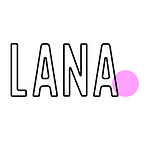The moment I got the challenge I had a couple of ideas but first I thought of doing desk research about existing solutions and ideas. The following are some of the applications I reviewed.
The existing applications had great features but most of them don’t provide interaction between the visitors and the zoo or between the digital app and the physical zoo. The zoo map is an essential part of the zoo experience, and in most cases, it’s overwhelming. It’s a bit of a challenge to provide all the needed information regarding a place (mall, park, zoo, etc) but maintain the simplicity and clarity of the map. On the other hand, a very great feature is using gamification in the applications as it keeps the experience interesting and challenging. Also, it’s a great way of exploring a place in a fun way.
The following is the UX approach I followed in my UX research. The first three phases were included in this project: Emphasize, Define, and Ideate.
Emphasize
The lifestyle of Sarah -the persona- changed lately due to COVID. Her behavior and feelings were affected in a way that she became more cautious and protective, limiting her to find a suitable place where she can enjoy her time away from work stress and also feel safe. She is busy and she gets lost in big places including the zoo. In addition, Sarah usually finds herself loving innovative ideas but also cares to maintain being eco-friendly.
The following are Sarah behavior and current status:
Later on, I created a User Journey Map of the current experience that Sarah goes through going to the zoo. The reason is to analyze the actions, feelings, thoughts and understand the pain points. These would help to emphasize with Sarah, providing her with a solution that directly tackles her pain points. The solution can be created after pointing out the opportunities for enhancing the current journey and providing a better experience in every phase that Sarah goes through.
Define
Problems:
After highlighting the main problems I defined business and user need as UX is where both meet.
At this phase, I listed down possible solutions:
And then prioritize it ti define the main features:
The solution would be an application for the zoo with the following features:
Key Features:
- Digital Map: Digital map of the zoo showing all activities and places along with the ability to filter it by (Stamped(visited places), not stamped, stores, shows, animals, etc).
- Crowd Status: Heatmap over the zoo map showing the busy areas giving the visitors a choice of avoiding the crowd and help them decide their destination within the zoo more safely and efficiently.
- Stamp Visited Area: Having scannable posters in the zoo where visitors can scan as they visit the locations to get stamped. This would give the visitors the ability to track visited places in a fun way and it draws challenge making the trip excited.
- Gifts and Points Redeem: Each stamp is equivalent to points and visitors could redeem these points for prices within the same zoo for example for a drink or a souvenir from the gift shop.
- Augmented Reality Navigation (AR): For easier navigation Augmented Reality is used to guide the visitor.
After defining the key features of the app I did research on the best practices in these features even if they are not directed to the zoo or entertainment market. In the following Leaf Diagram you can see these applications:
- AR Navigation: Google Maps provides many information regard the destination and the routes that you can take. It’s also supported with AR in some locations. Our solution would be as easy and it would use AR to make it more efficient and easier.
- Gamification: Duolingo uses gamification in the app to encourage users to learn and to make the learning process more fun. Our solution needs to be fun and encourage visitors to visit, learn about, and enjoy as many places in the zoo.
- Plan Trips: Trip Adviser make the user plan a trip in an easy way and it provides the information needed. Our solution needs to help the visitor to plan the zoo trip and view needed information.
- Crowd Status/ Heat Map: You can see a heatmap in Snapchat showing the locations where various users posted stories. In Google Maps it’s also clear to the user the crowd status on the route. Our solution tends to make the user aware of the crowd status using heatmaps.
Adventure Zoo App would improve the visitor user journey. The following storyboard demonstrates the user journey of Sarah using the app showing how the experience got enhanced leading to Sarah’s satisfaction.
Ideate
Before sketching the wireframe I did the following user task flow:
After that, I sketched a Lo-fi Wireframe of Zoo Adventure App:
I really enjoyed working on this project and I’m happy with the outcome though there are a lot of things to add and improve. Following is a list of the future work for the project:
